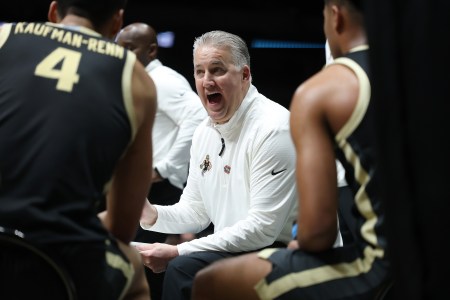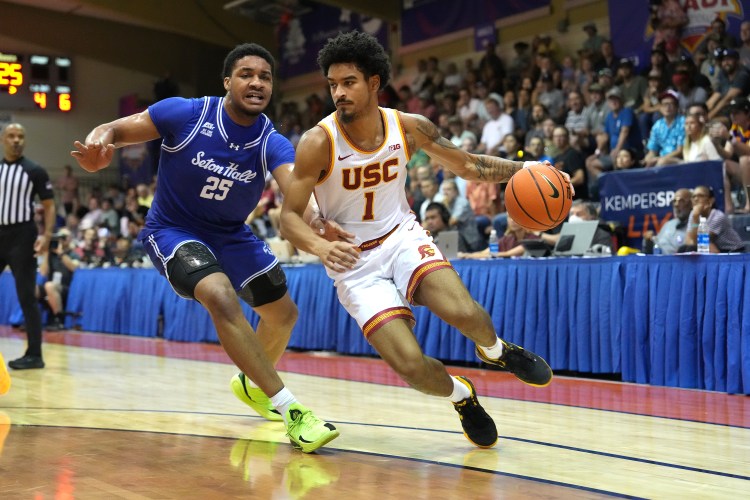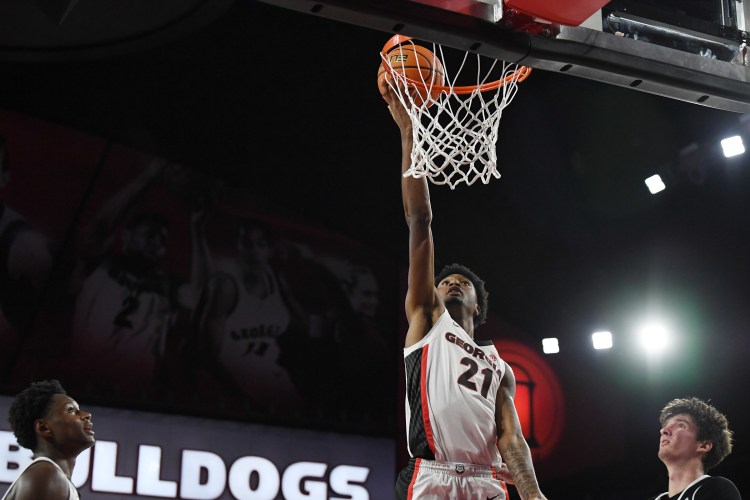Buzz Williams can’t stay still.
Never has.
“Staying status quo, we know, is never good enough,” Williams said Wednesday during his introduction at Maryland.
His assistants at Texas A&M worried he might burn himself out preparing for even the most remote possibilities, on and off the court.
When he would sit through post-game press conferences as the head basketball coach at Virginia Tech from 2014-2019, Williams endlessly fidgeted with the collection of digital voice recorders on the table in front of him, arranging and rearranging them, his mind working in a hundred different directions.
Some 25 years earlier, Brent Langdon Williams earned his “Buzz” nickname for the way he enthusiastically bounced around the gym as a student assistant at Navarro College from 1990-92.
Now, Maryland is his fourth job in the past dozen years.
“He’s unlike anyone I’ve ever worked for or with,” a former assistant said Wednesday.
No, Buzz Williams just can’t stay still. It might make him perfect for modern college basketball.
“It has been rapid change at a rate none of us has ever seen,” Williams, 52, said, speaking on the current state of the game. “And I think change is going to stay.”
Williams has taken his previous three employers — Marquette, Virginia Tech and Texas A&M — each to multiple NCAA Tournaments. None of his tenures have lasted longer than six seasons, but he’s never been fired.
Unafraid of change and self-aware enough to know his demanding style wears on people, Williams moves on well before things get rocky. He’s never on the hot-seat and always seems to be a hot commodity.
After one season at New Orleans, he took Marquette to five straight NCAA Tournaments, before a 17-15 mark in 2013-14 and an impending AD change, helped push Williams to Blacksburg, Va.
He spent five years coaching the Hokies, breathing new life into the sagging program, reaching the NCAAs in each of his last three seasons there.
Then, like clockwork, he packed up and headed West, taking over the Aggies. After going 24-24 over his first two years, Williams led A&M to the NIT, then a run of three straight NCAA trips.
Then he left, again.
It’s as if his “internal clock,” as one former employer described it, just alerts him it’s time to move on.
“A five and dive guy,” one former assistant coach said is how Williams’ describes himself, borrowing from former coach Lon Kruger. “Before you can get fired, you try to regenerate your career.”
Earlier in his career, Williams studied coaches tenures and determined that by their sixth or seventh year, most would either be fired or have their expectations raised to a new standard that no longer considered where the program was when the coach started, two assistant coaches who have worked with Williams said.
Why doesn’t Williams put down roots? Certainly at both Virginia Tech and Texas A&M, rural college towns where football reigns supreme and basketball success is largely viewed as a bonus, he could have stayed as long as he wanted.
One former administrator who worked with Williams likened him to a CEO at a startup company, suggesting that new challenges are what keep Williams his sharpest.
He strives to be the center of attention, even though that attention can make him uncomfortable. At his first ACC media day event, back in 2014, he looked longingly at the throng of reporters crammed around Duke coach Mike Krzyzewski and talked about what it would take to move the crowd to the Virginia Tech table.
When he wasn’t voted ACC coach of the year in his second season, despite leading the largest year-to-year improvement in league history, he wore that perceived slight as a badge of honor, frequently remarking that the media would never give him that award because they didn’t like him.
Williams operates at his best when he has, or creates for himself, an enemy – someone or something to build an “us-against-the-world” narrative for his team. At times, he’s shoehorned local media into that role.
When he left Marquette, a year after coaching it to the Elite Eight, he was about to get a new athletic director. Instability in that spot contributed to his A&M departure. He had three bosses in six years with the Aggies.
His latest move? Arguably the hardest to figure out. He was already making over $4 million a year with the Aggies, already playing in the SEC, one of the two conferences that control college athletics, along with his new home, the Big Ten.
Of course, maybe being perpetually second-fiddle to football was enough to make Maryland’s east coast grass look greener.
As he explained it Wednesday, Williams struck up a quick bond with Maryland president Daryll Pines, who impressed Williams with the direct way in which he approached the hiring. Pines and interim AD Colleen Sorem handled the search because the Terrapins are without an athletic director since Damon Evans left for SMU at the end of March.
Pines even confronted, head on, former coach Kevin Willard’s remarks that Maryland didn’t back the basketball program, financially, enough to compete for championships.
“I’m somewhat removed from civilization in general, but during the basketball season, even more so,” Williams said when asked about Willard’s assertions. “So, I really didn’t even know what had transpired. And I think that was what caught me off guard in my interaction with Dr. Pines: He told me what had transpired.”
And, in those discussions, Williams came away satisfied.
“Relative to what I thought was important on the commitment going forward, on what is needed to be successful at the highest level, there was never any question,” Williams said. “I’m at peace with all of it.”
For now.












